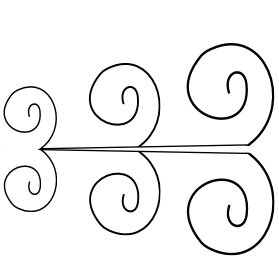Johann Sebastian Bach Partita in A Minor BWV 1013 and in G Minor
This publication of Johann Sebastian Bach’s Partita in A Minor BWV 1013 includes a complete version of the Partita transposed to G Minor. The central rationale for lowering the pitch level by a whole step is to duplicate the pitch level that was most commonly heard when the composition was first written (A 392). The transposition also associates the composition with an alternative set of timbres and it introduces players to new sets of muscle patterns as they play the work in a second key.
The G Minor version of the Partita also includes ossia passage work that musicians can study and play. The ossia passages are modeled after sections of Bach’s passage-work that are already extant within the same movement that includes them. Changes include 1. completing sequences that Bach altered, 2. changing closing notes, 3. inverting passage work, 4. re-ordering notes within a given passage, 5. decorating and/or simplifying passage work, and 6. duplicating the ending of the first half of the Allemande at the end of the second half of the Allemande. (This change reflects Bach’s writing in each of the remaining movements of the Partita.)
This work was inspired by similar work that I did as an undergraduate student in the theory courses that I took with Larry Baker at the Cleveland Institute of Music. We often “re-wrote” Bach’s chorales in a number of ways: we would rearrange the voicing, redirect the part-writing, recreate the counterpoint, and alter modulations. All of this was done as a means of developing our understanding of the techniques at hand and to gain insight into Bach’s compositional idiosyncrasies. I loved those classes and, in part, they led me to understand that analysis, at its best, allows us to glimpse the inner workings that coalesce to form meaningful and expressive forms of art.
With that said, I hope that exploring the Partita in two keys and learning about the composition by studying and/or playing the ossia passages gives readers many, many hours of enjoyment and insight.
Listen to the Partita as published by Paper Route Press. Tim Lane is the performer and he uses a flute made by Gary Lewis (No. 3). The work was recorded at Skyline Studio, Eau Claire, WI. Ivar Lunde Jr., recording engineer.
Here are some examples of alternative passage-work that have been suggested for the second movement of the Partita, the Corrette. The alternative passage work in m. 10 completes the third iteration of a descending, three-beat sequence that begins on the third beat of m. 6. In mm. 11 & 13 the direction of the first three sixteenth notes included in the first beat has been inverted, and in m. 12 (beats one and two) and m. 14 (beat one) the fourth sixteenth-note included in each beat has been changed in order to duplicate Bach’s writing in m. 14, beat two.


